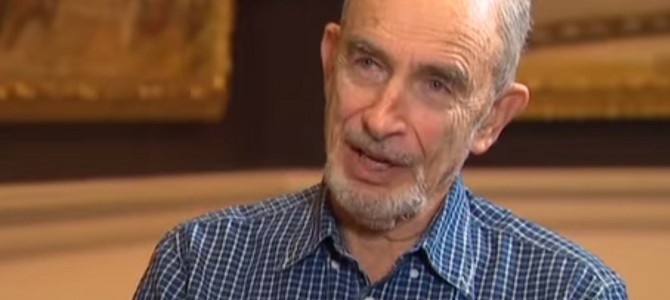
The New York Times just published an extraordinary “retro report”—a short video paired with an article—looking back at Paul Ehrlich’s “population bomb” theory, the fear that an uncontrolled human population would outstrip the ability of the Earth to support it.
The Times lays out some of the evidence for the theory’s failure, including the fact that the world’s population was about 3.5 billion when Ehrlich first made his apocalyptic prognostications in 1968. It’s 7 billion now, and we haven’t starved, we haven’t run out of resources, and we’re better off than we’ve ever been.
This report wouldn’t be extraordinary anywhere else. In the right-leaning press, it would be considered a pretty mild take on Ehrlich and his crackpot theories. The only thing that makes it extraordinary is that it isn’t in a right-leaning publication but in the citadel of the establishment left.
The video features two particularly good moments. In one of them, Indian development economist Gita Sen explains why Ehrlich’s theories became irrelevant in her country, which was supposed to be the first to starve. Instead, “the Green Revolution came to India with a big bang and a boom in such a rapid way that India has never looked back.” In the other, Stewart Brand, a former disciple of Ehrlich’s, asks: “How many years do you have to not have the world end to decide that it didn’t end because that reason was wrong?”
Most remarkable, however, is Ehrlich’s answer. Yes, he’s still around, the Times interviewed him, and they asked him that question. I got the impression it may have been the first time someone prominent has asked Ehrlich to answer this directly, and his guard seems to have been down, probably because he remembers all the puffball coverage he’s gotten from the New York Times over the years. So he answered it, and it has to be heard to be believed. He said: “One of the things that people don’t understand is that timing, to an ecologist, is very, very different from timing to an average person.” I wonder, is BS still the same for an ecologist as it is for an average person?
It is such an obviously arrogant, dishonest, evasive answer that the Times report features it prominently, and not in a positive way. They captured in one line the sudden realization that Ehrlich is a charlatan who has been conning the highest levels of the culture for years. (Jonathan Last runs down all of the awards and accolades heaped on Ehrlich as recently as 2012.)
That’s why it’s so great to see that the mainstream left is finally beginning to face up to this reality.
But there is one big omission in the report: the triumph of Ehrlich’s intellectual antipode, Julian Simon. He isn’t mentioned at all in the video, even though plenty of people who have been influenced by him are still around. (For example, they might have interviewed Matt Ridley, author of The Rational Optimist and 2012 winner of the Julian Simon Memorial Award.) Simon gets only a semi-dismissive mention in the accompanying text.
Some preternaturally optimistic analysts concluded that humans would always find their way out of tough spots. Among them was Julian L. Simon, an economist who established himself as the anti-Ehrlich, arguing that “humanity’s condition will improve in just about every material way.” In 1997, a year before he died, Mr. Simon told Wired magazine that “whatever the rate of population growth is, historically it has been that the food supply increases at least as fast, if not faster.”
But the story is way more interesting than that. In 1980, Simon and Ehrlich made a famous bet about the future prices of commodities. If Ehrlich was right and a rising population was burning through the Earth’s resources, this ought to show up in commodities prices. As metals all got scarce, they should become more expensive. Instead, they all got cheaper—as they have done for the past century while the world’s population has more than tripled—and Simon won the bet handily.

But Simon was Ehrlich’s intellectual antipode in a more profound way. He answered Ehrlich’s great flimflam with his own identification of a great truth. Simon explained that the reason the overpopulation catastrophe never materialized was because human beings create more resources than they use up. The “ultimate resource,” Simon argued, is human thought and ingenuity which is constantly discovering untapped resources and inventing new ways to use them.

This is the real point of the story, and the Times never really takes it on board. That’s why they still give some credence to Ehrlich’s basic theory and imply that it fizzled primarily because population just didn’t grow fast enough. As Stewart Brand puts it, “they’re not having so many kids, and that’s changed the whole story.” The video then goes on to praise non-coercive efforts to reduce fertility in developing countries.
And the Times is still committed to an outgrowth of the same apocalyptic theory. It cites British journalist Fred Pearce: “In Mr. Pearce’s view, the villain is not overpopulation but, rather, overconsumption. ‘We can survive massive demographic change,’ he said in 2011. But he is less sanguine about the overuse of available resources and its effects on climate change.” Perhaps some day they’ll do a look back on the failure of the global warming hysteria—though at this rate, we should expect to see that some time around 2062.
One the other hand, this story is heartening evidence that people can learn from mistakes, no matter how slowly. Stewart Brand is a great standout. While he still gives some credence to population growth as a problem, he also acknowledges that declining population could be an even bigger (and far more likely) problem. “The point at which population peaks at around 9 billion in the 2040s or 50s, the story will not be, oh my god, we’ve got 9 billion people, how horrible. It will be, oh my god, we’re running out of people.”
He also grasps that there is something bigger at stake than just a particular failed prediction or the destructive policies that come from it. There’s a larger worldview. “The concerns about population,” he notes, “became misanthropic.” I disagree. I think it started out misanthropic. Ehrlich tells the Times, “The idea that every woman should have as many babies as she wants is to me exactly the same kind of idea as [that] everybody ought to be permitted to throw as much of their garbage into their neighbor’s back yard as they want.” So babies are like garbage. How lovely. That outlook hasn’t changed. What changed is that Brand began to notice it.
That’s the basic issue involved: are human beings any good? Is a new person just another mouth to feed—or does he have the potential to become someone who discovers how to feed the world? Do more humans just cause more problems—or do we solve them? Do we only destroy, or do we create? Are human beings good, and if so, shouldn’t we want more of them?
The answer is already pretty clear. Let’s not wait another 47 years to affirm it.
Follow Robert on Twitter.








